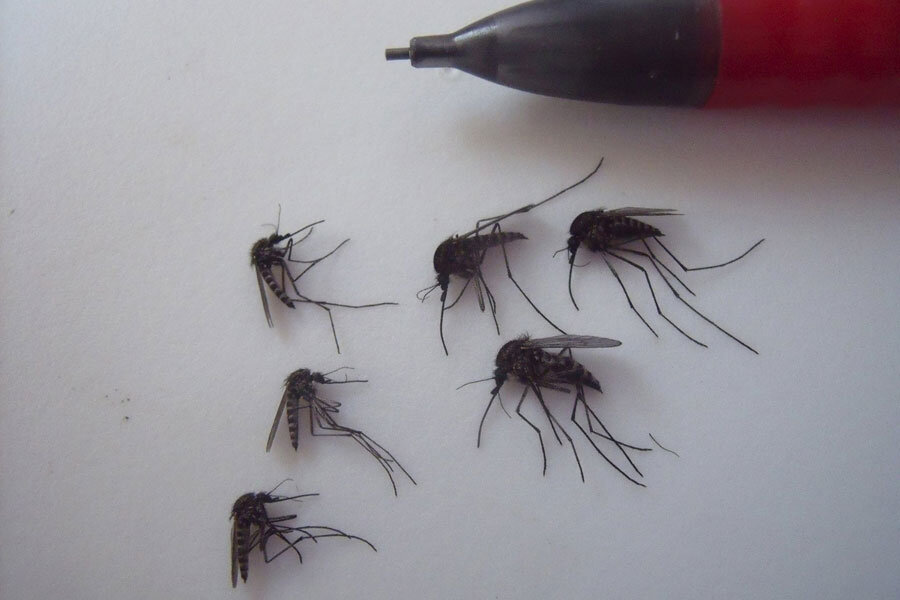The Arctic mosquito problem: why there is no quick fix
According to a new paper from the Dickey Center’s Institute for Arctic Studies at Dartmouth College, rising temperatures in the Arctic are increasing the number of mosquitoes in western Greenland, and may harm the native caribou population.
“Increased mosquito abundance, in addition to northward range expansions of additional pest species, will have negative consequences for the health and reproduction of caribou,” says lead author of the paper Lauren Culler, a postdoctoral researcher at the Institute.
The warming temperatures shift mosquitoes' reproductive cycles to correspond more closely with the timing of caribou calving, allowing the parasitic female mosquitoes to easily feed on vulnerable calves – a synchronization that experts say can be deadly for the baby caribou.
With only a 2 degrees Celsius (or 3.6 Fahrenheit) temperature increase, the researchers’ model predicts the mosquitoes’ survival rates will increase by 53 percent. Currently, the Intergovernmental Panel on Climate Change (IPCC) predicts a temperature rise of up to 10 degrees Fahrenheit within the next century.
Although more research needs to be done on the role of mosquitoes in the Arctic, three potential impacts are already evident said Dr. Culler in an interview with The Christian Science Monitor.
For one, fewer caribou could mean less food is available to people. “The caribou are a subsistence resource for local communities, so we want to understand the factors that control caribou population,” explained Dr. Culler. “They have a deep cultural value as well, a real link to human systems.”
And we also need to look at what this could mean for economic development in the area. Tourism is already a struggling industry in the Arctic, because cold weather conditions “already restrict tourism to a pretty short time of the year,” adds Culler. If there are increasing pest problems in the Arctic, tourists will be less encouraged to visit.
Finally, changes in climate could affect the distribution of mosquito populations. “We expect species to be on the move,” fears Culler. “Especially as vectors of disease.”
Culler says it’s important that we “keep track of who's staying and who's going” because as “continued climate change encourages species to move northward,” researchers predict the movement of West Nile Virus-carrying mosquitoes into Canada.
But Culler believes that mosquitoes aren’t necessarily all bad.
“Maybe eliminating mosquitoes in other parts of the world wouldn’t have as much of an impact,” says Culler. “But we need a full appreciation for the role mosquitoes play in the Arctic ecosystem. We haven’t been able to fully quantify, but we expect they pollinate Arctic flora and feed local birds.” [Editor's note: The original version of this article misidentified the flora.]
According to a recent study by researchers at the University of Wisconsin – Madison, an insect similar to the mosquito, the midge, is responsible for fertilizing terrestrial ecosystems in Iceland. After beginning their lifecycle in Icelandic ponds, midges’ remains act as a necessary “cross-ecosystem movement of nutrients and biomass.”
As evidence emerges of ecological changes underway in the Arctic, we don’t have any room to make mistakes, explains Culler. “Arctic systems have low biodiversity: not as many species live there as in the rest of the world. In this particular area, this is the only species of mosquito.”
“There are always other factors to consider,” says Culler. “We need more appreciation for mosquito ecology across the Arctic.”





